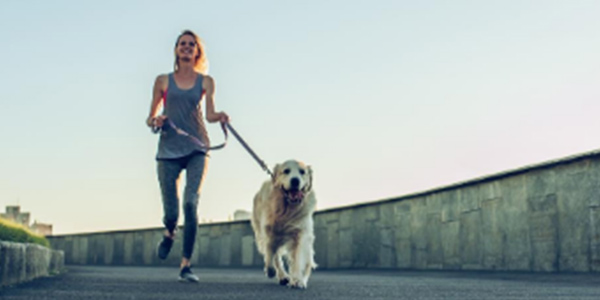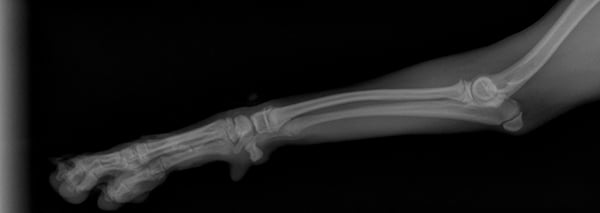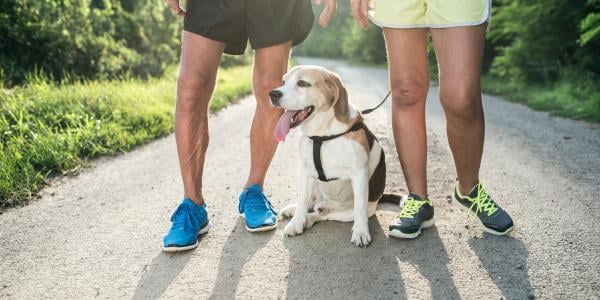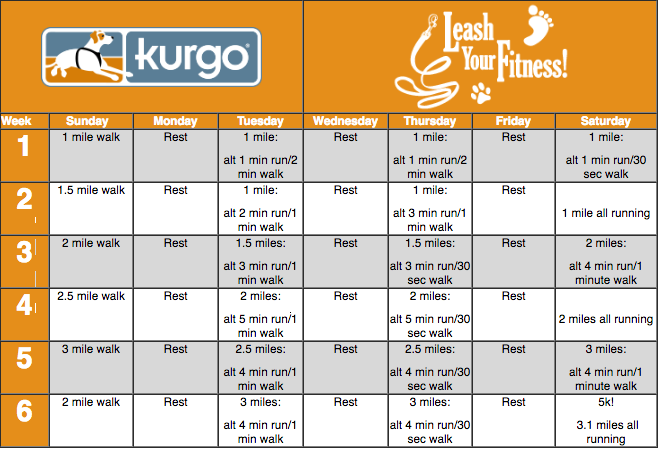 If you’re a runner or looking to become one, you may have thought about bringing your dog along. Not only is running great physical exercise for your dog, but it can also help your dog get better at walking on a leash! But not all dogs will enjoy running, and it may not be safe for your dog to go on a run with you.
If you’re a runner or looking to become one, you may have thought about bringing your dog along. Not only is running great physical exercise for your dog, but it can also help your dog get better at walking on a leash! But not all dogs will enjoy running, and it may not be safe for your dog to go on a run with you.
While you might think running with your dog is as simple as attaching their leash and heading out for a run, there are some things you’ll need to do to prepare before you go.
Although it seems that dogs are practically born running, there’s a difference between a dog running while playing versus going for a structured run with you. When your dog runs during playtime, they are running for short bursts and in erratic patterns. When you take your dog out for a run, they’re running in a straight line for an extended period of time, often on unforgiving surfaces like concrete or asphalt.
At What Age Can Your Puppy Start Running with You?
It is not recommended to run long distances with a puppy or adolescent dog because their bones are still growing, and the repetitive and high impact of running on their growth plates can be harmful, potentially leading to shortening of or conformational problems with their legs. It may also increase their risks of, or worsen the discomfort of, hip or elbow dysplasia or shoulder osteochondrosis. It is recommended for most breeds that you wait until your pup is about 18 months old to ensure the growth plates have closed and bones/joints/ligaments have completed growing.

Growth plates are the areas of bones where lengthening and other early bone growth takes place. They’re what allows a puppy (and even young human babies) to grow to full skeletal size. There are multiple growth plates throughout a dog’s skeleton, and each plate can "close" — stop growing new bone — at a different age. This depends on a variety of factors, particularly the dog’s final, mature size.
Your veterinarian is your best resource for knowing when your pup’s growth plates are all closed and no longer a factor in determining your dog’s running risks. In some cases, especially where there is a concern for either early or late closure, or just to be absolutely positive when a plate is closed, X-rays may be necessary and recommended by your veterinarian.
What Dog Breeds Are Not Suited for Running?
Although comparison is the thief of joy for most, comparing an Australian Shepherd to an English Bulldog seems like comparing a fig to a pineapple. One = natural athlete, the other ... not so much. So first, make sure your dog's breed is suited to running.
Brachycephalic breeds such as bulldogs (French, English), Pugs, Boxers, etc., are not suited to running (especially in warm or hot weather) due to the confirmation of their face making it harder for them to breathe. It is not recommended to run with these breeds for that reason.
Dog Health Conditions That Affect Running with You
Before you consider launching your dog’s athletic career, it is recommended they have a full checkup with their veterinarian, this will include a complete physical examination to ensure they are in excellent health and have the ok from their vet to start running. Your veterinarian will advise if they have any concerns and can provide advice about what's safe and healthy for your individual dog.
Additionally, if they do have pre-existing conditions, you can discuss these with their veterinarian and if they would impede them from running, such as being overweight, joint conditions like arthritis, hip or elbow dysplasia, or degenerative joint disease. Your veterinarian may recommend giving your dog joint supplements pre-emptively, particularly if you live in a city where most of your running will be on pavement, making the impact on joints a lot harder. Moreover, conditions such as luxating patellae, laryngeal paralysis, or collapsing trachea will not make them ideal candidates for runners.

How to Start Running with Your Dog
Know Your Dog
Some dogs will want to sprint with you down the street right out of the gate, while others may need to take it slower and learn what’s expected of them while out for a run.
It’s important to ask yourself these three questions:
- Is my dog enjoying this? If your dog shows resistance heading out for a run (like pulling the opposite way on their leash or refusing to go outside) or their health seems impacted, they might not be suited for running.
- Are they excited to go on a run?
- Are they eating and sleeping normally?
If the answer to any of these questions is no, slow the run to a walk and give your pup a break.
Check out our top picks for running accessories to make running with your dog easier and safer.
Practice Helpful Training Skills
Training your dog to stay on a certain side, keep pace, and change direction smoothly and easily will go a long way in making your runs safe and easy. Check out our article on Training Your Dog to Run with You to learn how.
Start slowly. Work your way up.
Finding a new past-time or challenge is always fun; however, too much of a good thing can sometimes end badly. In this case, running too much too soon can result in injury or illness to not only you but to your beloved dog. So, it’s important to start slowly and build their fitness and muscle strength steadily to make them the best training partner they can be.
Start with a combination of running and walking intervals that increase and decrease over time as their fitness improves. Begin with one minute of running followed by two minutes of walking for a total of one mile. As the weeks progress, you can add more running time while still building in walk breaks until your dog is comfortable running without stopping to walk. Just be sure to only increase the mileage a maximum of 10–20% every couple of weeks to minimize potential health and injury risks to your dog.
This 5k training plan from Kurgo is a great one to follow to safely introduce your dog to running.
Let Your Dog Set the Pace
Not only should you start slow with introducing your pup to running, but you should also run at a pace they’re comfortable with. Your dog’s preferred pace will depend on their size and stamina. If they’re barely keeping up with your pace, slow down. You may need to slow to a walk and offer a water break before beginning to run again at a slower pace.
Your dog may follow you a step or two behind to make it easier for them to track your movement and direction. If you’d rather have them at your side, take a look at the training tips below to encourage them to change their running position.
Schedule Rest Days
Recovery days are important, even for dogs! On the days that your dog isn’t running, make sure to take them on a walk to keep their joints and muscles moving and ready for the next run.
SAFETY PRECAUTION: Though it may be fine for you to “pop” some Advil® or other pain reliever following your runs, you need to resist the urge or thought to do so for your dog! Ibuprofen, naproxen, acetaminophen, and even aspirin – all common “active ingredients” in some of the most popular over-the-counter human pain relievers – can cause very serious side effects and toxic injuries in dogs! There are far safer alternatives your veterinarian can prescribe and recommend if needed.
Here are some tips and things to look for if you’re worried that your dog might be in pain after a run (or for any other reason).





